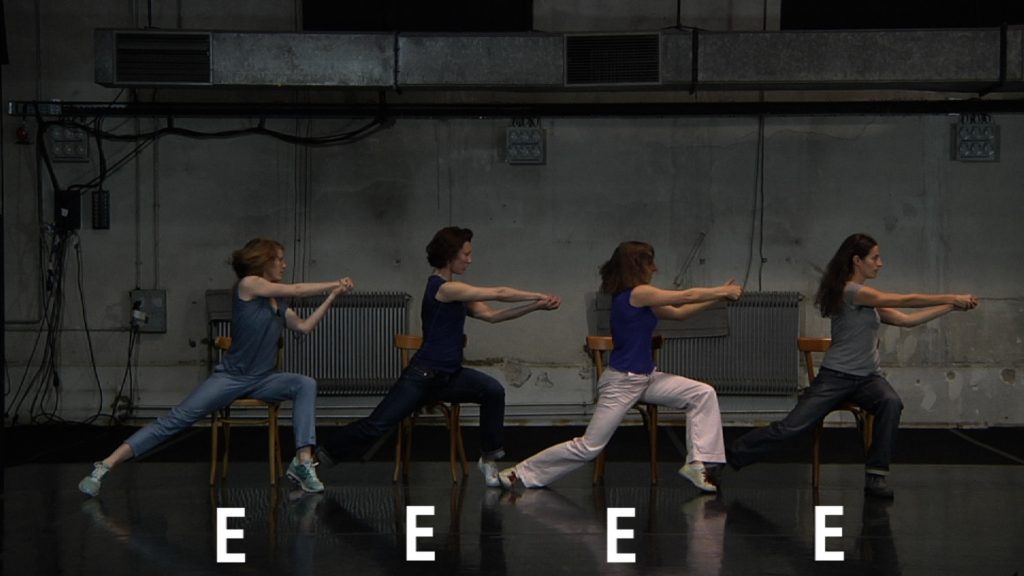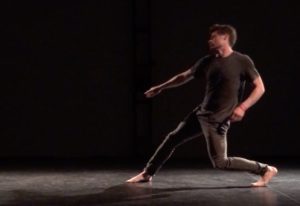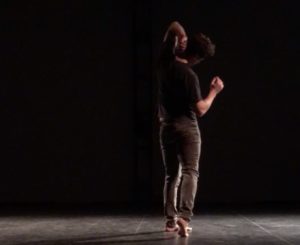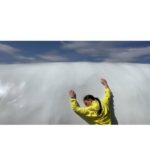Under Quarantine: How five companies are tackling the virtual stage - Vancouver Ballet Society
- Home
- Features 2020 - 2023
- Under Quarantine: How five companies are tackling the virtual stage

By Jenn Edwards
As dance companies across the globe are showing us, there’s no one way to approach virtual performance. Below are five examples of how dance organizations large and small, established and emerging, are finding innovative ways to engage audiences as theatres everywhere are closed due to the pandemic, and we find ourselves in forced isolation.
Rosas — Brussels
Rosas danst Rosas is the piece that first brought international acclaim to Belgian choreographer Anne Teresa De Keersmaeker in 1983. In an abstracted factory setting, four dancers repeat, rearrange and loop gestures ranging from gentle to fierce, all housed within a rigorous multi-layered structure. The piece has become iconic within the postmodern dance canon, and has seeped into popular culture in recent years, inspiring a music video by Beyoncé in 2011.
For the 30th anniversary of Rosas danst Rosas in 2013, the company launched an online challenge called Re:Rosas, which invited the general public to learn the structure of the second section, performed on chairs, and create remixes of their own. Now, in 2020 and with social distancing in mind, the remix project has become more relevant than ever, with 150 new videos uploaded since the COVID-19 pandemic began, many featuring split screens of dancers in different locations.

Rosas’ website has video tutorials teaching the movements in detail, and provides the original music by Thierry De Mey. After filming their own arrangement of the movement vocabulary and music, anyone can upload their video. To view the remixes or upload your own, visit https://www.rosasdanstrosas.be/en-home/
The Response — Vancouver
Amber Funk Barton has been at the helm of The Response, a small contemporary company in her hometown of Vancouver, since 2008. In 2017, she began Dance Café, an annual platform for the dance community to share new work in a low-pressure studio setting. Adapting to the pandemic, this year’s event happened online with consecutive live streams from four dance artists.

 The May 2 performances varied widely in location and approach. From her family’s farm in BC’s Okanagan valley, Jenna Berlyn slid and rolled against the tarp-like surface of a white silage bunker. Company 605’s Josh Martin blended mechanical and fluid movements in a long beam of light across an otherwise dark space. Sophie Maguire performed a paper doll puppet show set in a terrarium of sorts, and from a white studio space, Marina Robinson danced a solo-in-progress exploring “layers of self,” as she explained at the end of her stream.
The May 2 performances varied widely in location and approach. From her family’s farm in BC’s Okanagan valley, Jenna Berlyn slid and rolled against the tarp-like surface of a white silage bunker. Company 605’s Josh Martin blended mechanical and fluid movements in a long beam of light across an otherwise dark space. Sophie Maguire performed a paper doll puppet show set in a terrarium of sorts, and from a white studio space, Marina Robinson danced a solo-in-progress exploring “layers of self,” as she explained at the end of her stream.
Funk Barton plans to host another online Dance Café on June 6.
“If there is any way I can help artists by supporting them to keep creating and provide them with a small honorarium, well, then that’s the least I can do.”
Australian Dance Theatre — Adelaide
After celebrating 20 years under the direction of Garry Stewart last year, Australian Dance Theatre had a busy roster of performances, collaboration and touring planned for 2020. Of course, they are now facing the challenge of a season without theatres. So they have come out with ADAPT, a free retrospective season of past works, viewable for 48 hours each.

Every two weeks since the beginning of May, online audiences can travel back in time with the company in a series of seven previously filmed works, all choreographed by Stewart. Upcoming on June 12 is Devolution (2006), a futuristic work blending live performance with robotics. Held (2004), featuring real-time dance photography and projection, is available June 26. On July 10, ADAPT winds down with The Age of Unbeauty (2002), concluding on July 31 with Birdbrain, a deconstruction of Swan Lake that marks Stewart’s first full-length work for the company in 2000.
Many companies are taking the opportunity to provide similar retrospective programming, either for free or for a fraction of the cost of going to the theatre. Although seeing works choreographed for the stage on a screen can never replace the experience of seeing them live, increased accessibility to repertoire that might be otherwise unavailable is one of the silver linings of this crisis.
ADAPT also featured one work not created by Stewart: Microfilms, earlier in May, was comprised of eight short films conceived, performed, shot and edited by ADT dancers. As they can only use the technology and space available to them while isolating at home, these films will speak to the kinds of innovation that arise out of restriction.
Compagnie Tauschfühlung — Vienna
This Austrian company, led by choreographer Bianca Anne Braunesberger, has presented solo and ensemble works across Europe since 2011, including at the International Solo Dance Theater Festival Stuttgart and the Venice Biennale. Tauschfühlung, which loosely translates as “contact exchange,” is known for blending contemporary dance with hip hop, theatre, film, visual art and, most prominently, original music.
Stefan Zotter and Sebastian Achleitner have acted as composers and sound designers for a majority of the company’s past works, in collaboration with Braunesberger, who sometimes lays down vocal tracks herself. Now in isolation, Zotter and Achleitner have remotely collaborated on an electronic album called Teleheimarbeit (Tele-homework). With timely track titles such as “Are the parks closed yet?” and “Emergency Gear,” Teleheimarbeit sounds mechanical and apocalyptic, but with glimmers of hope.

In an open call on Facebook, which ended on May 15, Tauschfühlung challenged their followers to film improvised dances to one of 15 tracks on the album. Three videos will be selected for upload, as well as exhibition, by the company in Autumn 2020.
Peggy Baker Dance Projects — Toronto
At a time when dance companies face an uncertain future, artistic director Peggy Baker is reflecting on the past. Influences and Intersections is a series of short videos, posted once a week, in which she looks back on artists that have informed the Canadian dance icon’s work across three decades.
In one instalment, Baker illustrates how two visual artists, Donald Judd and Sylvia Safdie, inspired her 2009 solo earthling. In 2008, on a visit to New York, she had been struck by Judd’s work with large plywood boxes, which contained tilted platforms. “It was like looking down into a really wacky stage,” she narrates in the video. That year she had also met with Safdie, a painter, sculptor and filmmaker based in Montreal, whose very different work often sources objects found in nature. “She showed me footage of a beetle on its back… It was tipping and coiling, and had a beautiful repertoire of movements for its many limbs.”
While the plight of Safdie’s beetle provided movement inspiration, Judd’s crates informed the design of a tilted platform that became her stage. Baker’s eyes glimmer as she says into her webcam, “It is extremely satisfying to know that those experiences are held inside a work of my own.”

In the opening video, Baker explains her motivation for the project. “In the quiet of this strangely disengaged time,” she says, “I want to follow the threads that have connected me to art from all disciplines… I want to look back over the years to acknowledge the artists who have shaped my life and my work as a choreographer. And more than anything I want to amplify that gratitude by sharing it.”

